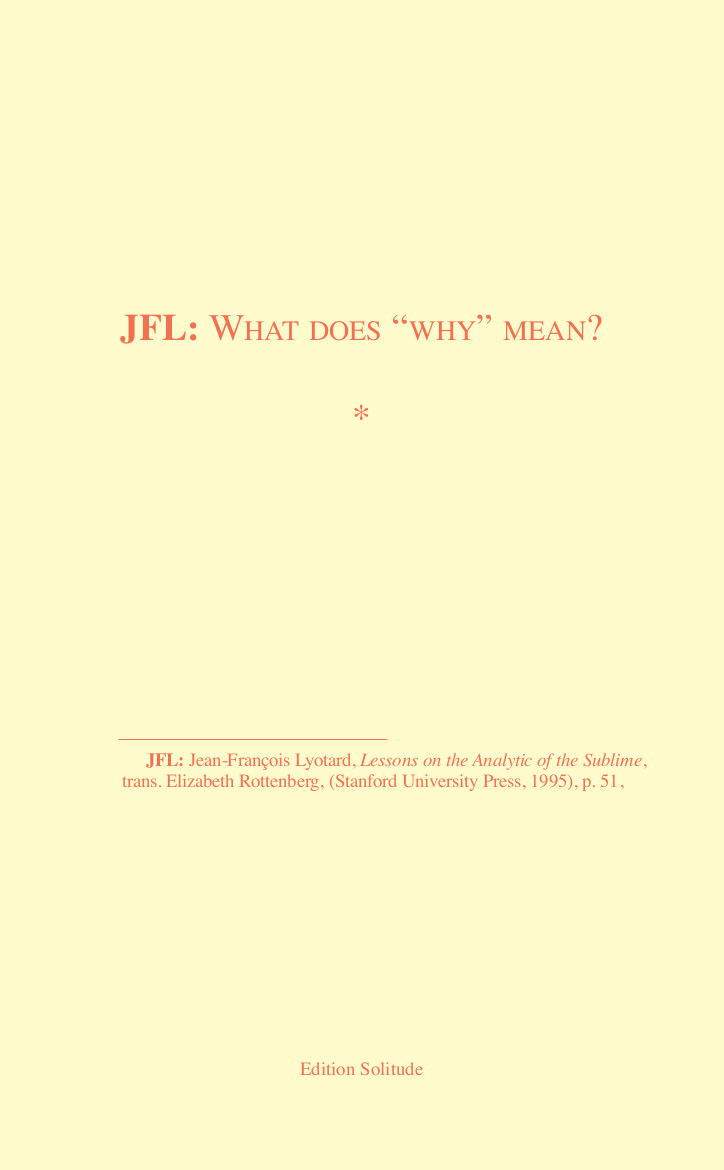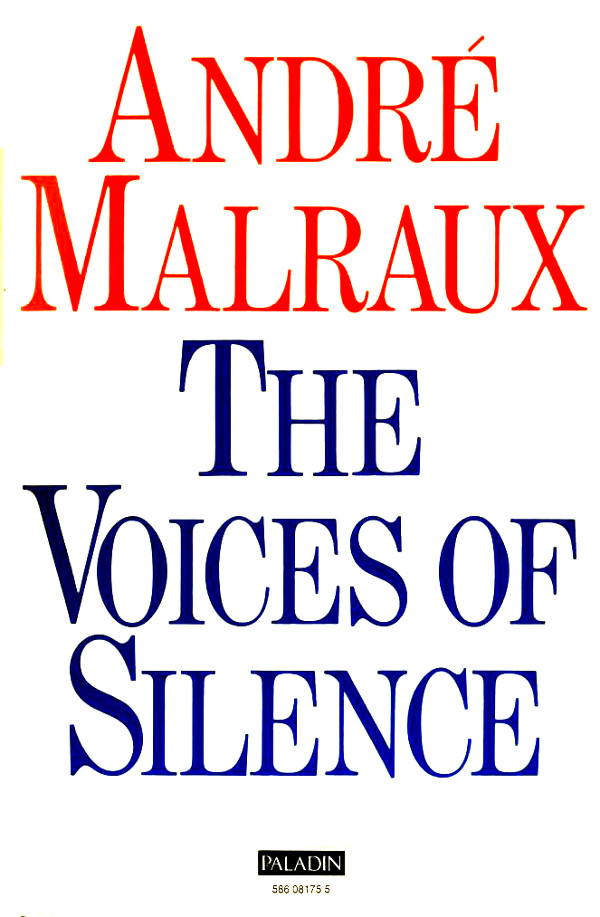Octavian Esanu: JFL: What Does “Why” Mean? (2002)
Filed under artist publishing | Tags: · philosophy of art

“Hilarious and profound. This book has so many layers of meaning that you can read it every day for the rest of your life. In 2001, while residing at Akademie Schloss Solitude in Stuttgart, artist and curator Octavian Esanu read hundreds of interviews and essays by artists and art critics. He then formed a new text out of questions about art, that he culled from his readings. Each question is duly footnoted.”
Publisher Akademie Schloss Solitude, Stuttgart, 2002
ISBN 392908578X, 9783929085785
197 pages
via UbuWeb
Publisher (2nd edition, 2005)
WorldCat
Mark Rothko: The Artist’s Reality: Philosophies of Art (2004)
Filed under book | Tags: · abstraction, art, art theory, beauty, colour, environment, light, myth, painting, philosophy of art, reality, renaissance, representation, space, symbolism

“One of the most important artists of the twentieth century, Mark Rothko (1903–1970) created a new and impassioned form of abstract painting over the course of his career. Rothko also wrote a number of essays and critical reviews during his lifetime. Although the artist never published a book of his views, his heirs indicate that he occasionally spoke of the existence of such a manuscript to friends and colleagues. Stored in a New York City warehouse since the artist’s death more than thirty years ago, this manuscript, titled The Artist’s Reality, is now being published for the first time.
Probably written around 1940–41, this book discusses Rothko’s ideas on the modern art world, art history, myth, beauty, the challenges of being an artist in society, the true nature of “American art,” and much more. The Artist’s Reality also includes an introduction by Christopher Rothko, the artist’s son, who describes the discovery of the manuscript and the process of bringing it to publication. The introduction is illustrated with a small selection of relevant examples of the artist’s own work as well as with reproductions of pages from the actual manuscript.”
Edited and with an Introduction by Christopher Rothko
Publisher Yale University Press, 2004
ISBN 0300115857, 9780300115857
136 pages
André Malraux: The Voices of Silence (1951–)
Filed under book | Tags: · art history, art theory, museum, painting, philosophy of art, photography, sculpture

“This is not a history of art, but a work on the sculptor’s and painter’s arts of the world by a passionate art lover. The organization is by ideas; the illustrations are drawn from all peoples, countries, and times. Each picture is placed within a page or two of its discussion in the text. As an idea develops, the places and periods of its illustrations wander. The coherence is an inward one, not one of objective order.
Malraux starts from the premise that with the broadening of our knowledge of the world, and especially by the aid of archeology and photography, the many visual arts developed by the human race in its history are now mainly known and accessible. They are as it were in one grand museum without walls–the museum of our cognizance.
Further, they are known to many creative artists, and will be known to more, and will influence them. In other words, the situation no longer exists which has characterized the appearance of most arts heretofore, namely of growing up insulated, in regional solitude and self-sufficiency. From now on, the history of human visual art will be of a new order.
Another idea Malraux develops is that while painting and sculpture do represent objects, the artist, contrary to legend and public opinion, develops his work out of his ability to see–not nature, but his predecessors, and to transcend them. Style is thus a social phenomenon, an interrelation of men through their works.” (from a review by A.L. Kroeber, American Anthropologist, 1957)
Originally published in 3 volumes as Psychologie de l’art, 1947-49, the work had been thoroughly rewritten and published as Les Voix du silence, Gallimard, 1951.
Translated by Stuart Gilbert
First published in English by Doubleday, 1953
Reprinted by Secker & Warburg, London, 1954, 661 pages
Publisher Paladin, UK, 1974, 679 pages
Reviews: Maurice Blanchot (1950/1997), William Barrett (Saturday Review, 1953).
PDF (1954, 44 MB, no OCR, IA, added on 2023-5-3)
PDF (1974, 81 MB, no OCR)

